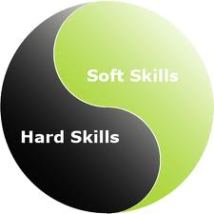We’re all different, and that’s a good thing. The problem is that most of us negate this diversity when working with each other. We focus on what makes us similar so that we can build rapport but, conveniently, work around exploring what makes us different. In my opinion, this avoidance is the mother of most future misunderstandings and conflict.
If we are different, treating others like I would like to be treated doesn’t work (see my early blog post on the limitations of the Golden Rule), I need to understand how you think and behave in order to be able to create an environment where both of us can be comfortably with each other.
Even though most people are aware of this, they still think that with time, they will learn how to work with each other…and that’s true. But who’s got the luxury of time? More and more organizations are now matrixed which means that people work with each other in short term project teams. In these cases, how does time help?
There is another way. A better way. A more difficult way. It’s called setting expectations and the only way to do that is to sit down and talk. Ideally, this discussion needs to happen at the beginning of a working relationship, but it is never too late.
Asking each other what we expect from each other so that we can work together effectively. If people who work together share with each other explicitly what they expect from each other at a behavioral level, it will be a lot easier to meet each other’s expectations. The great thing is that once we’ve asked the other about his/her expectations we can then present our own.
This discussion needs to happen as early as possible in the relationship as it limits the chance for perceived bad faith in future conflicts. Whatever the reason I share with you about why I did not appreciate how you did something, often it be seen as an expectation shared to serve my interest in this given situation. On the opposite, if I share with you, at the beginning of our relationship, how I think information should flow between both if us, it is easier for you to meet that expectation and if conflict arises I can refer back to this original discussion without being perceived as acting out of bad faith.
Then why do people not engage in this conversation more often? It could be for multiple reasons: they don’t want to know what others expect from them as they expect others to adapt to them, they are afraid of hearing expectations that they don’t really want / cannot meet, they are not really aware of what they expect from others or they could just be lacking the language to articulate their own expectations. Whatever the reason(s), and some of them are absolutely legitimate, none of us are mind readers, and most of us don’t have the luxury of time. It’s a lot easier to meet someone else’s expectations once I know what they are and that will reduce the potential for unintentional disrespect and ensuing conflict.
Post by Guillaume Gevrey – C2C Director & Principal Consultant







